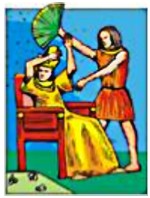 Let's jump into the wayback machine, all the way to the summer of 1994. David G. was starting at his very first job out of school, developing some train control system software. Perhaps not thrilling work, but hey, it was a job.
Let's jump into the wayback machine, all the way to the summer of 1994. David G. was starting at his very first job out of school, developing some train control system software. Perhaps not thrilling work, but hey, it was a job.
"David, I'm so glad you were able to make your way here!" It was Tom, a thick, sweaty looking man in his 40s who gave a hearty, double-handed hand shake upon entering the door. "Us old timers have been hoping for some fresh experience to come to our department here!"
"Glad to be on board," David smiled. As a fresh graduate, he wasn't quite sure what experience he might bring to the table, but who was he to turn down a compliment? Especially from his to-be mentor.
"Too bad that you didn't start here a day earlier," Tom panted, "You missed some real excitement - one of the batch jobs failed and we had to manually update about 1,500 transactions. Exciting stuff! Just finished up about an hour ago!"
"Wow," David responded while discretely drying Tom's perspiration off his hands when he began, "So...are things always this exciting?"
"Not ordinarily, but when you see me looking like 'this', you know that I've been hard at work. C'mon, I'll show you how we do our magic here!"
After a quick tour of the cafeteria, the break room, and the restrooms, it was on to the "machine" room. The machine room was a small, multi-purposed, and moderately-warm room that housed some mechanical equipment, a few mainframes, and an ancient-looking tower computer that was stripped of its case cover. "That's the build machine," Tom said, "it's the only way to get software from the development network to the mainframes.
As the nickel tour ended, Tom showed David to his desk and began explaining the build-promote-deploy process they used. "After compiling your software," he said, "just submit it into a network directory, and the build machine will find it, compile it, and start copying it to the mainframe. But here's one catch: the build machine can get a little warm, which causes all sorts of problems in transferring files over. But we have a pretty simple manual intervention, I'll show ya."
Just as David was about to ask for clarification, Tom responded, "I'm going to submit a new package to the build machine. Now since you're new, I'll give you a ten-second head start to get to the machine room and fan the build machine."
David blinked. "Excuse me?"
"Yeah, you'll have to fan air from the cooled hallway into the machine room TOWARDS the machine, or the promote will die and you'll have to start over. Ready?"
David interrupted, "wait a second, is this a hazing prank—"
Clearly, Tom couldn't hear him, as he increased his volume on each word continuing "Set? Now...GO! GO! Hustle man! Hustle, Hustle, HUSTLE!!"
Like the wind, David hurried to the end of the hallway and made it to the closed-up machine room. Upon entering, there was a large piece of cardboard with two cut out handles marked "machine Room Property - Do NOT Trash". It took a second, but David figured out what he was supposed to do: he grabbed the cardboard and started to fan the only machine without a case cover. Dust and dirt swirled in the room and just has his arms were about to give out, Tom came up from behind him.
"You did it!" Tom was clearly impressed, "now put that fan down before you fall over! The promote succeeded! Now, let's head on back so I can show you our filing system for post-promote documents..."
As the months passed, David came to learn that, oddly enough, the younger and healthier non-smoking developers tended to have more success at getting their builds sent to the mainframe and tested. Somehow, the procedure persisted over several years, through one building move and a few machine room moves. And over all that time, nobody ever thought to vent A/C directly to the machine room, or a build machine that wasn't so temperamental, or at the very least, buy an electric fan.

